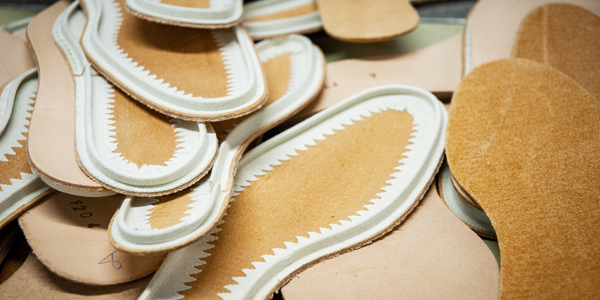下载PDF
IoT Applications and Upgrades in Textile Plant

技术
- 分析与建模 - 大数据分析
- 应用基础设施与中间件 - API 集成与管理
- 功能应用 - 远程监控系统
- 网络与连接 - 网关
- 网络与连接 - 射频识别
- 平台即服务 (PaaS) - 应用开发平台
- 传感器 - RFID阅读器
- 可穿戴设备 - 补丁标签
适用行业
- 服装
适用功能
- 离散制造
用例
- 资产跟踪
挑战
在任何时候,这家纺织公司的制造工厂都有多达 2,000 辆纺织车在使用。这些推车从一个房间推到另一个房间,运送材料或半成品。以前,每辆购物车都附有一张带有手写描述的纸。这种传统的加工方法使产品跟踪变得极其困难。此外,确保每一车材料或半成品到达正确的加工工作站也是一个问题。因此,该公司需要一种智能解决方案来跟踪其工厂的资产。他们还需要一种解决方案来帮助他们收集过程数据,从而提高制造效率。
客户
未公开
关于客户
台湾一家纺织厂。
解决方案
在研华的 WISE-PaaS 联盟计划下,这家纺织公司在其工厂部署了购物车跟踪系统。 RFID 标签贴在每辆推车上,RFID 阅读器天线贴在每台机器或设备上。现在,当一辆推车靠近时,RFID 阅读器会从其标签中获取该推车的 ID,并将数据传输到 ARK-1123 数据网关。网关使用其 WISE-PaaS/RMM 远程数据和设备监控管理软件,确保数据传输和设备安全。 WISE-PaaS 还提供 RESTful API,以便与 MES 轻松集成以启用电子生产记录。微软 Azure 提供物联网大数据计算和分析。最重要的是,WISE-PaaS 提供跨编程平台的轻松访问,并且可以与现有的管理解决方案集成,以改进产品/服务和商业智能。
收集的数据
Asset Status Tracking, Instructions, Operation Performance, RFID , Technical Documentation
运营影响
相关案例.

Case Study
Fire Alarm System and Remote Monitoring Sytem
Fire alarm systems are essential in providing an early warning in the event of fire. They help to save lives and protect property whilst also fulfilling the needs of insurance companies and government departments.Fire alarm systems typically consist of several inter-linked components, such as smoke detectors, heat detector, carbon monoxide, manual call points, sounders, alarm and buzzer. The fire alarm system should give immediate information in order to prevent the fire spread and protect live and property.To get maximum protection a shoe manufacturer in Indonesia opted for a new fire alarm system to monitor 13 production sites spread over 160 hectars. Although the company had an existing fire alarm system, it could not be monitored remotely.It was essential that the new system would be able to be monitored from a central control room. It needed to be able to connect to the existing smoke detector and manual call point. Information should be easily collected and passed on to the Supervisory Control and Data Acquisition (SCADA) system. Furthermore, the system should have several features such as alarm management, auto reporting, being connected to many client computers without additional cost, and run 24/7 without fails. The company also needed a system which could be implemented without changing the architecture of the existing fire alarm system.

Case Study
Retailer Uses RFID Scanner to Improve Efficiency
Patrizia Pepe wished to improve the logistics of their warehouse: accepting incoming goods from their production sites, movement of items throughout
the warehouse, and packaging of goods for distribution to the retail locations. They initially tried to use barcodes for this function. Because barcodes must be individually scanned within a line-of-sight, the acceptance of goods coming into the warehouse was too time consuming. Working with the University of Florence, Patrizia Pepe instituted a five-month pilot project beginning in August of 2009 to test the validity of an RFID solution. The pilot involved tagging of about 60,000 items for the second seasonal collection, and convinced the company to move forward with tagging all items.

Case Study
Monitoring and Controlling Automatic Mixing and Dispensing Machines
As technology advances, textile manufacturing has been transformed from a labor-intensive to a partially or fully automated industry. Automation is significant in all segments of textile production - from spinning to printing, and textile machinery manufacturers are constantly searching for new technologies and automation processes will increase the productivity of their machines. The color paste mixing and dispensing machine is an essential part of the printing and dyeing process. With the advantage of automatically computerized controls and database management, the system can significantly improve its dispensing precision, working efficiency and production quality as well as reducing material consumption.

Case Study
Recording the Run
Nike is looking for ways to reduce the amount of material and labor needed to make high-performance, customized footwear and speed the delivery of its products to all kinds of athletes. Laser-cutting could scale down the amount of equipment needed to create the 20 to 30 parts of a typical shoe. However, Laser-cutting always leaves burnt edges on soft fabrics.







